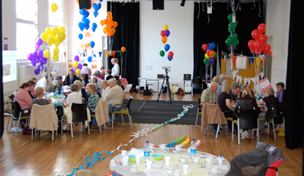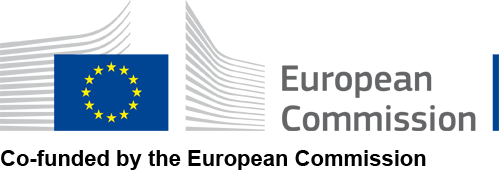Want full & instant access to shape?
To access the full benefits of shape you need to register for FREE
 Register NowAlready registered? Log in here
Register NowAlready registered? Log in here

Welcome to the Shape online resource. This is a quick guide to the features and unique navigation of Shape
Show me how to use Shape SkipWant full & instant access to shape?
To access the full benefits of shape you need to register for FREE
 Register NowAlready registered? Log in here
Register NowAlready registered? Log in here
Generate
The GENERATE stage will help you collect and process research on your challenge’s background, users, contributors and influencers. It will guide you with idea generation, identifying opportunities and obstacles, and will help you select the approaches most likely to successfully meet your objectives.
Research
Introduction
So far, we have covered the following aspects of your challenge:
- The desired outcome
- How to measure success
- The current situation/context
- Stakeholders, contributors and influencers
- Available resources
The next step is to start exploring themes.
In this stage we will look at:
- Research
- Opportunity generation
- Processing
- Selection
Research
Research is essential, providing insights into stakeholder behaviour and similar solutions so that you:
- Can learn from others’ mistakes
- Don’t invest in a similar solution twice.
Your research should normally address the following questions:
What similar challenges and solutions already exist?
What significant research, surveys and reports already exist?
What is an acceptable time scale to solve the problem?
Are there sensitive issues among the stakeholder groups? E.g. would users be willing to pay for a new service?
What technologies are tried and tested for solving your problem?
Are there any specific considerations that need to be taken into account, such as data security, anonymity or discretion etc.?
You can start by contacting people and organisations you wish to engage in the project to inform them it about and request that they reserve time to be part of the process.
Your search for a solution should be as broad as possible, look beyond your sector, nationally and/or internationally and within private sector services if they are relevant.
Stakeholder engagement
Involving your stakeholders in a regular and structured way is a great opportunity to fully understand your challenge and discuss ways of addressing it. You can use any combination of these stakeholder engagement techniques:
- Surveys and questionnaires
- Focus groups and idea generation workshops
- One-on-one interviews
- Anthropological methods
- Co-creation
- Validation workshops
- Observation and advisory groups
- Disseminating Information
All these techniques are valuable if they are applied to the right stakeholders at the right times. Stakeholder engagement will involve time and budget, so it’s important to have a strategy for:
- Who will be involved
- Who will do the work (internal or external)
- How it will be done
- When
You can engage with stakeholders for idea generation as well as research purposes,
Top tip
Depending on the scale of your project and available budget, you can consider contracting a separate supplier for your project research.
Opportunity generation
Generating opportunities based on your research is a crucial part of the creative process. You are responsible for generating and capturing the largest number of opportunities from a diverse range of sources. You should also engage with users and other stakeholders.
It is best to appoint a facilitator to help generate opportunities. If there is no one suitable in your organisation, you can look for a management consultant/specialist or a design specialist/director. Have a look at the ‘Facilitator criteria tool’ for a list of recommended criteria for this role.
The more opportunities you can generate the better. You should consider anything and everything using ‘blue sky thinking’ during a brainstorming workshop. At this stage of divergent thinking, no opportunities are too wild, bold, expensive or dangerous, even if they are only vaguely relevant to the challenge.
Ground rules for idea generation
– All ideas are welcome; there are no stupid ideas
– No one is allowed to ‘shoot down’ ideas – blocking, being negative or criticising
– Building on others’ ideas is encouraged
– All ideas must be recorded (e.g. audio, video, a wall of sticky notes, a chart or list)
– An independent facilitator increases the number and quality of ideas
– Everyone is equal; there are no seniors or juniors for the duration of the brainstorm
> Check out the ‘7 Tips on Better Brainstorming tool’, by IDEO
Processing
Processing is when you start to edit the opportunities generated during brainstorming and ‘blue sky thinking’, into a collection of realistic opportunities.
This can be carried out immediately after the ’blue sky thinking’ sessions with some or all of the people involved in it. Alternatively, your facilitator can sort the most interesting opportunities from the workshop, and get the group together for further analysis later.
Some opportunities might need more research and analysis to assess whether they are technically viable, while others need to be tested on experts, users or staff. In these situations, it’s a good idea to go back to the person who had the idea, as it’s possible they have more detailed information about it.
Make sure you have a good sense of how realistic each opportunity is before proceeding to the selection step. Referring to your resources identified in the resources step of the Scope and Frame stage will also guide you. Using a chart headed in three columns such as; Will work, might work (needs more research) and won’t work is a useful starting point.
Selection
Choosing which opportunity(s) to proceed with is a very important decision. It leads to a principal choice of direction, which is difficult to reverse once underway.
To help you make a qualified choice, highlight each opportunity against a list of success criteria based on the success indicators that you defined during the Scope & Frame stage.
Your challenge wall is good way of organising this activity: draw a chart or table on a large piece of paper – listing the success criteria along one axis and the opportunities along the other.
To select the most successful opportunities from the opportunity generation exercise, you can tick each opportunity for each of the success criteria they meet and then count all the ticks to see which have the most.
Try to include the following elements in your list of success criteria:
Is the opportunity possible…
- In the time frame?
- Within budget?
- With the available human resources?
- Does it address one or more stakeholders and contributors?
From this point onwards any opportunity can be selected for development into a project.
Case Study 

Project Title
Alzheimer 100, Improving Quality of Life Through Co-Design
Client
Design of the Time 2007 (Dott 07) Initiative
Design Suppliers
Thinkpublic
Launch Date
2007
Alzheimer 100 is one of the seven projects of Dott 07, the biennial initiative aimed to improve the quality of life through co-design. Thinkpublic consultancy was selected to carry out the project, using design research and prototyping techniques to uncover new opportunities for the future care and provision of Alzheimer's patients.
View all Case Studies and ToolsRead More






